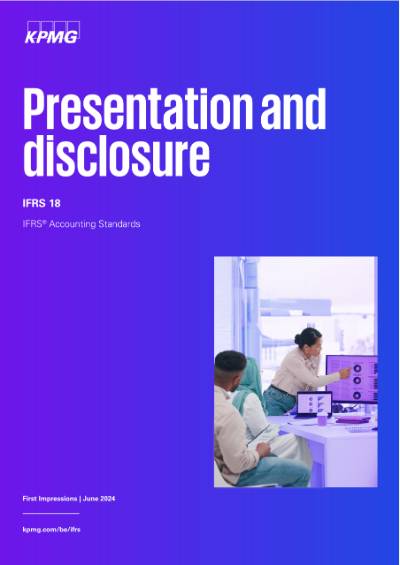29 April 2024 (updated 1 July 2024)
Highlights
The way companies communicate their financial performance is set to change.
Responding to investor calls for more relevant and comparable information, IFRS 18 Presentation and Disclosure in Financial Statements1 aims to provide greater consistency in presentation of the income and cash flow statements, and more disaggregated information.
So what does this mean for companies’ financial reporting? Essentially, companies’ net profit will not change. However, what will change is how they present their results on the face of the income statement and disclose information in the notes to the financial statements. Also, certain ‘non-GAAP’ measures – management performance measures (MPMs) – will now form part of the audited financial statements. Together, the new requirements will help companies to better tell their story and connect their reporting in the financial statements.
The new standard will impact all companies across different industries so now is the time to get ready. Companies need to focus on the detailed requirements and apply them to their specific circumstances to make new judgements, navigate complexities and oversee changes to systems and processes.
IFRS 18 affects all companies, bringing significant changes to how you present your income statement and what information you need to disclose, and making certain ‘non-GAAP’ measures part of your audited financial statements for the first time. You’ll see three new categories of income and expenses, two defined income statement subtotals and one single note on management-defined performance measures.
A more structured income statement
Under current IFRS® Accounting Standards, companies use different formats to present their results, making it difficult for investors to compare financial performance across companies.
IFRS 18 promotes a more structured income statement, as set out below. In particular, it introduces a newly defined ‘operating profit’ subtotal and a requirement for all income and expenses to be classified into three new distinct categories based on a company’s main business activities.

All companies are required to report the newly defined ‘operating profit’ subtotal – an important measure for investors’ understanding of a company’s operating results – i.e. investing and financing results are specifically excluded. This means that the results of equity-accounted investees are no longer part of operating profit and are presented in the ‘investing’ category.
IFRS 18 also requires companies to analyse their operating expenses directly on the face of the income statement – either by nature, by function or on a mixed basis. Under the new standard, companies need to choose the presentation method that provides the ‘most useful structured summary’ of those expenses. If any items are presented by function on the face of the income statement (e.g. cost of sales), then a company provides more detailed disclosures about their nature.
MPMs – Disclosed and subject to audit
Companies often use ‘non-GAAP’ information to explain their financial performance because it allows them to tell their own story and provides investors with useful insight into a company’s performance.
IFRS 18 now requires some of these ‘non-GAAP’ measures to be reported in the financial statements. It defines MPMs2 as a subtotal of income and expenses that:
- is used in public communications outside the financial statements; and
- communicates management’s view of financial performance.
For each MPM presented, companies will need to explain in a single note to the financial statements why the measure provides useful information and how it is calculated, and to reconcile it to an amount determined under IFRS Accounting Standards. Such disclosure will enhance transparency and will afford users better information on companies’ financial performance.
Greater disaggregation of information
To provide investors with better insight into financial performance, the new standard includes enhanced guidance on how companies group information in the financial statements. This includes guidance on whether material information is included in the primary financial statements or is further disaggregated in the notes.
Companies are discouraged from labelling items as ‘other’ and will now be required to disclose more information if they continue to do so.
Next steps
Now is the time to get ready to report under the new standard, which is effective for periods beginning on or after 1 January 2027 and applies retrospectively. It is available for early adoption.
- Assess the impacts on your financial statements – including new judgements.
- Communicate the impacts with investors.
- Consider how the new requirements impact financial reporting systems, processes and controls.
- Monitor any changes in the local reporting landscape.
Our First Impressions publication provides our detailed insights and comprehensive analysis on applying the new standard, together with illustrative examples. You can also use our high-level guide.
1 IFRS 18 replaces IAS 1 Presentation of Financial Statements.
2 IFRS 18 defines management-defined performance measures (MPMs) as a subset of commonly known ‘non-GAAP’ measures, alternative performance measures (APMs) or key performance indicators (KPIs).
Explore
Connect with us
- Find office locations kpmg.findOfficeLocations
- kpmg.emailUs
- Social media @ KPMG kpmg.socialMedia





